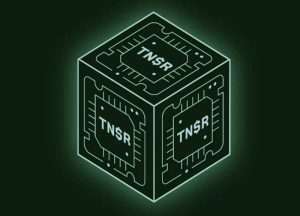A Closer Look at the Performance of Stablecoins During the Crypto Bear Market
Liquidity issues have brought down certain algorithmic stablecoins, including Terra. However, others have shown remarkable fortitude in the current bad market. Most cryptocurrencies have drastically underperformed benchmark stock market indexes despite being long regarded a hedge against inflation and an alternative to fiat currencies that are subject to devaluation.
Why? Central banks’ tightening of monetary policy, particularly the US Federal Reserve (Fed) and India’s central bank, the Reserve Bank of India (RBI) (RBI). There are two types of fiat currencies: those backed by a commodity, like gold, and those that are not.
Stock and cryptocurrency prices have fallen sharply since their all-time highs due to recent quantitative tightening measures aimed at slowing down the world’s fastest-growing economy’s record-breaking inflation.
In contrast to stablecoins such as Tether (USDT) and USD Coin (USDC), the Terra (UST) crash has shattered the assumption that stablecoins are stable after wiping billions of dollars of investor capital from the market.
To counteract the volatility of existing cryptocurrencies like Bitcoin and Ether, stablecoins were developed as a less risky alternative. Stablecoins are backed by fiat or crypto currencies, commodities, or even financial instruments.
In spite of the fact that the stablecoin market is composed of USDT and USDC, the UST crash led USDT to lose over $10 billion in market capital. The rise in USDC’s market share from 27% to 34% in the aftermath was enormous.
As their issuers made steps to secure additional collateral to compensate for any additional selling pressure from nervous investors, these tokens have now stabilized near the $1 mark as they were issued on a 1:1 basis with collateralized US dollar funding.
Liquidity Risks are a Concern
When it comes to stablecoins that employ non-stablecoin cryptocurrencies as collateral, such as Dai (DAI), Magic Internet Money (MIM), and Liquidity (LUSD), declining values for these top cryptocurrencies can cause liquidity problems.
Due to the higher cushion required to keep the US dollar peg in these over-collateralised stablecoins (BTC, ETH, or other derived assets), these underlying cryptocurrencies are more likely to experience significant price declines as a result.
The UST disaster showed how easily this can snowball into a domino effect.
It is clear that stablecoins have a long way to go before they can regain the trust of investors after the UST catastrophe.
Tron-issued stablecoins like USDD, whose core activities are governed by the TRON DAO Reserve, have shown improved stability while also delivering an interest rate of 30% to investors who stake the stablecoin.
TRON DAO Reserve’s approved white list, rather than its underlying algorithm, is responsible for all token creation and management, which means that ordinary investors can only trade the USDD stablecoin on the secondary market.
FRAX, a fractional-algorithmic stablecoin that employs USDC as collateral and Frax shares (FXS) as a value accumulation and governance token that is designed to be volatile, is another option.
Maintaining the Dollar Peg through Innovation
Newer stablecoins like FRAX and Terra Classic (USTC) show how crypto entrepreneurs are experimenting with various methods of keeping the US dollar peg in place with greater reliability.
Many people choose stablecoins because of the high interest rates they offer, but they are also promoting the growth of decentralized finance (DeFi) and will continue to attract protocols that want to fill the vacuum created by the UST crisis..
Stablecoins have yet to see how the current crypto bear market affects the entire stablecoin basket, but future price corrections could threaten the basic foundation of these virtual assets.
US and UK financial regulators are already considering legislative changes to ensure that existing legal frameworks can manage risks connected with the failure of enterprises generating stablecoins, recognizing the necessity for quick regulation to avoid another UST fiasco.
In the future, it is possible that stablecoin issuers will have to secure their stablecoins with tangible assets rather than other stablecoins or cryptocurrencies. Stablecoins will need both innovation and regulation in order to survive and thrive in a Web3 environment.










